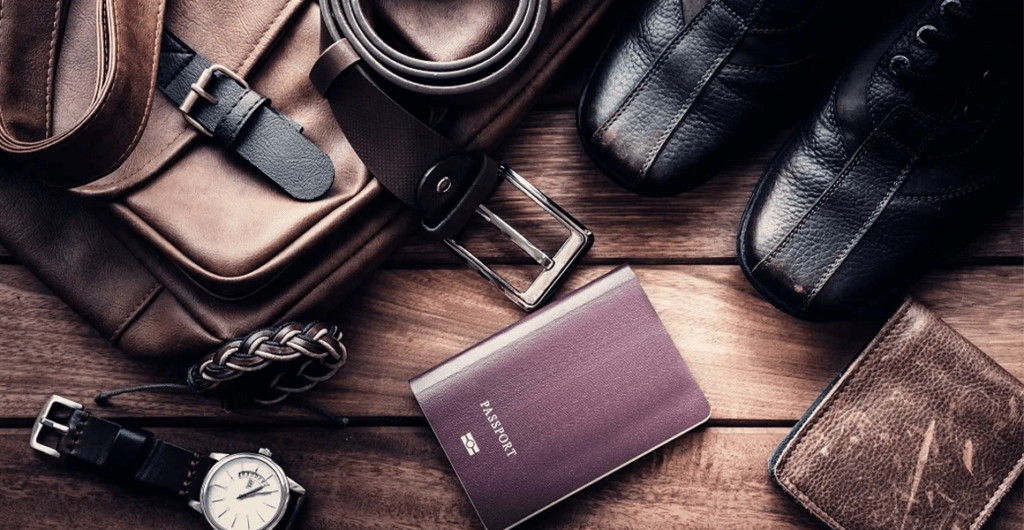Exploring the Different Types of Leather: An Ultimate Guide
Leather is one of the most durable, versatile, and timeless materials on the planet. From the luxurious elegance of full-grain leather to the supple softness of suede, there is a different leather type for every taste and purpose. In this blog, we will explore the properties, applications, and unique features of some different types of leather so you can make informed decisions about your leather products. So, let’s dive into the world of leather.
Explore Different Types of Leather
1. Full Grain Leather
Full-grain leather refers to the top layer of skin. It is considered the best leather in the world. It is also the most expensive and highest-quality leather on the market today. In order for the leather to be called full-grain, the grain has to be completely intact. Even if it is to remove natural imperfections, polishing, and sanding cannot be used. Full-grain leather has a finer texture because it is made from the outer skin layer. Full-grain leather is the most resilient and breathable type of leather. The nicest thing about full-grain leather is that it gets more elegant with age, which is also one of its distinctive qualities. Also, with continued usage, the colors exhibit a tiny alteration. Also, no two full-grain leather purses will be identical to one another.
2. Genuine Types of Leather
Genuine leather, the third grade of leather, is produced from the scraps left over after dividing the top layer of the hide for top-grain and full-grain leather. Split leather and rectified leather are other names for genuine leather. Genuine leather is also made flawless using sanding or polishing procedures, much like top-grain leather. Genuine leather requires leather tanning and artificial methods to provide a high-quality leather finish since it lacks a natural skin finish. By enduring artificial processes, genuine leather items resemble top-grain leather goods in look and durability. Genuine leather handbags, on the other hand, could not be as breathable for the same reason. It is less expensive than full-grain and top-grain leather.

3. Bonded Types of Leather
As the name implies, bonded leather is created by recombining different leather scraps. Blended or reconstituted leather is commonly used to describe the lowest grade of leather that can be used as filler. The remaining pieces of leather are mixed with chemicals like latex or polyurethane to create bonded leather. The items created from bonded leather are less durable as a result of the absence of genuine leather.
4. Top Grain Leather
High-end leather accessories and bags are usually made from top-grain leather, the second-highest quality of leather. It is produced from the second layer of the hide, after full-grain leather. In essence, top-grain leather is full-grain leather that has had its faults polished or sanded off to create a beautiful final product. Since faults have been eliminated, top-grain leather is both thinner and less expensive than full-grain leather. Nevertheless, this procedure also reduces the leather items’ longevity and durability.
How Can I Tell the Differences Between Leather Types?
1. Grain Pattern
As previously stated, full-grain leather naturally contains minor imperfections and exhibits less consistent grain compared to genuine, split-grain, and bonded leather. Additionally, high-quality leather hides may have rough edges, while lower-grade synthetic leather will appear more uniform.
2. Smell
If you detect the scent of plastic or chemicals, it is advisable to avoid purchasing leather products with such stitching. Authentic leather should only emit the characteristic scent of leather and nothing else.
3. Flexibility
Higher quality leather tends to be stiffer and more durable. Nonetheless, over time, both full-grain and top-grain leather will become more flexible. If you come across leather with a loose structure or weak texture, it is an indication of lower-grade quality.
Wrapping Up
Leather is a strong, adaptable material with a classic charm. To accommodate a range of tastes and needs, leather comes in a variety of varieties. The best and most expensive alternative is full-grain leather, which is distinguished by its complete grain and inherent flaws. Genuine leather is more expensive yet less permeable. Bonded leather is the least resilient and the lowest grade.
In order to correct flaws and provide top-grain leather a uniform finish, rectification is utilized. To differentiate between various types of leather, look at the grain patterns, smell the aroma of genuine leather, and test the flexibility.
In this blog, we have explored various types of leather, each with its unique characteristics and applications. Understanding these differences helps in making informed decisions. For expert care of your leather items, take advantage of our professional leather cleaning services for their longevity and pristine condition.
